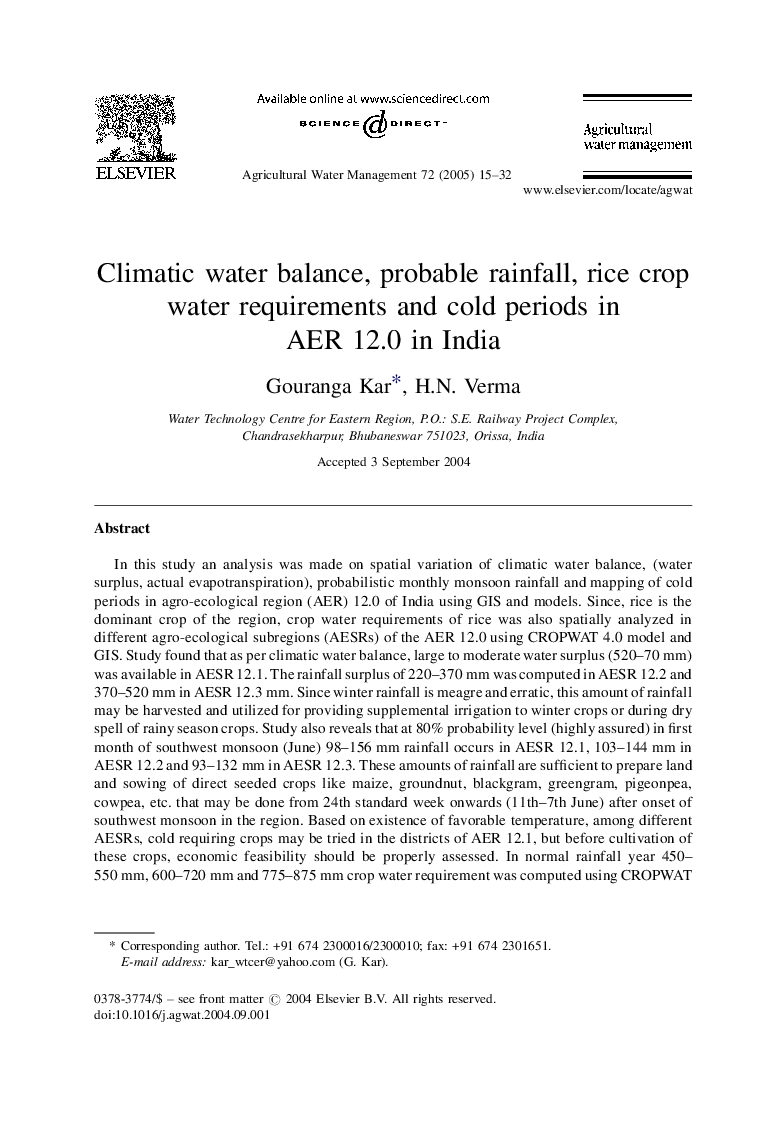| Article ID | Journal | Published Year | Pages | File Type |
|---|---|---|---|---|
| 9467335 | Agricultural Water Management | 2005 | 18 Pages |
Abstract
In this study an analysis was made on spatial variation of climatic water balance, (water surplus, actual evapotranspiration), probabilistic monthly monsoon rainfall and mapping of cold periods in agro-ecological region (AER) 12.0 of India using GIS and models. Since, rice is the dominant crop of the region, crop water requirements of rice was also spatially analyzed in different agro-ecological subregions (AESRs) of the AER 12.0 using CROPWAT 4.0 model and GIS. Study found that as per climatic water balance, large to moderate water surplus (520-70Â mm) was available in AESR 12.1. The rainfall surplus of 220-370Â mm was computed in AESR 12.2 and 370-520Â mm in AESR 12.3Â mm. Since winter rainfall is meagre and erratic, this amount of rainfall may be harvested and utilized for providing supplemental irrigation to winter crops or during dry spell of rainy season crops. Study also reveals that at 80% probability level (highly assured) in first month of southwest monsoon (June) 98-156Â mm rainfall occurs in AESR 12.1, 103-144Â mm in AESR 12.2 and 93-132Â mm in AESR 12.3. These amounts of rainfall are sufficient to prepare land and sowing of direct seeded crops like maize, groundnut, blackgram, greengram, pigeonpea, cowpea, etc. that may be done from 24th standard week onwards (11th-7th June) after onset of southwest monsoon in the region. Based on existence of favorable temperature, among different AESRs, cold requiring crops may be tried in the districts of AER 12.1, but before cultivation of these crops, economic feasibility should be properly assessed. In normal rainfall year 450-550Â mm, 600-720Â mm and 775-875Â mm crop water requirement was computed using CROPWAT 4.0 model for autumn rice, winter rice and summer rice, respectively in different AESRs of AER 12.0.
Related Topics
Life Sciences
Agricultural and Biological Sciences
Agronomy and Crop Science
Authors
Gouranga Kar, H.N. Verma,
